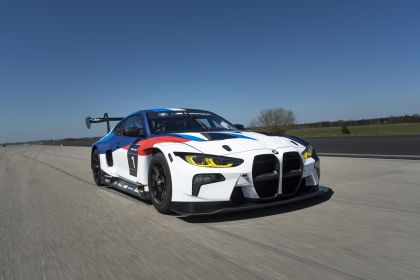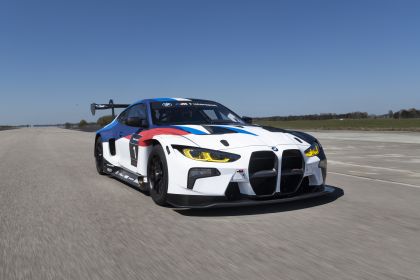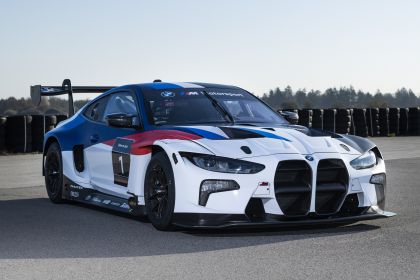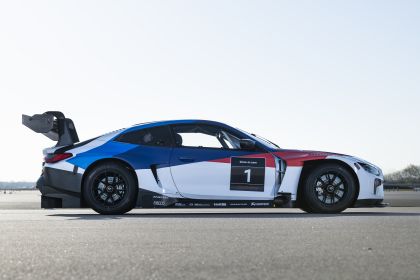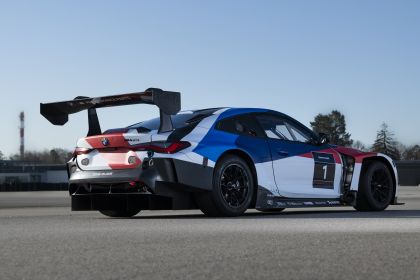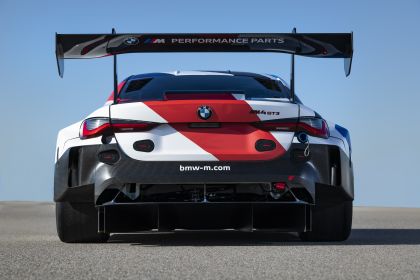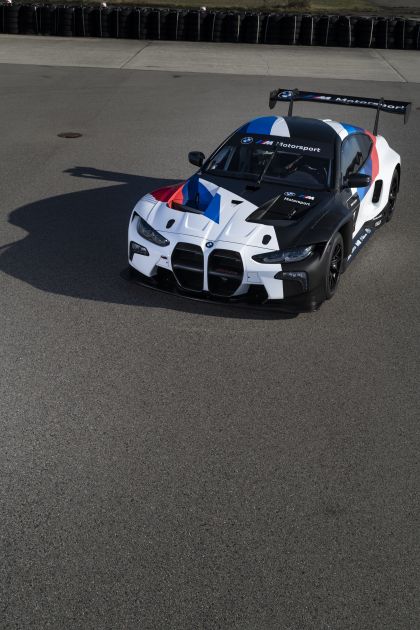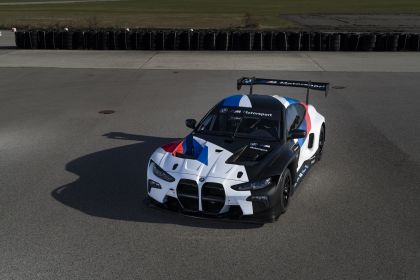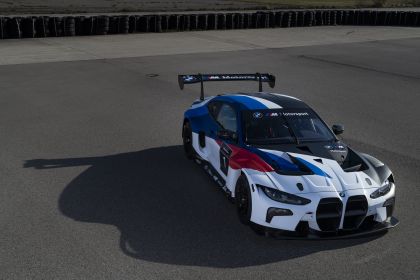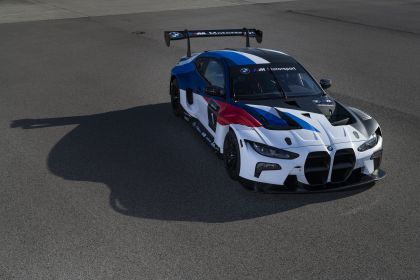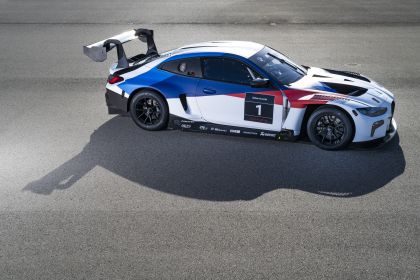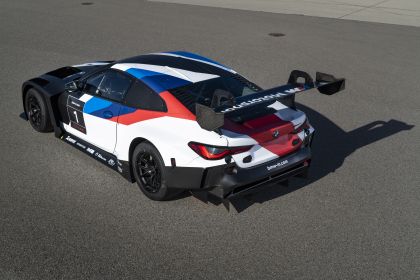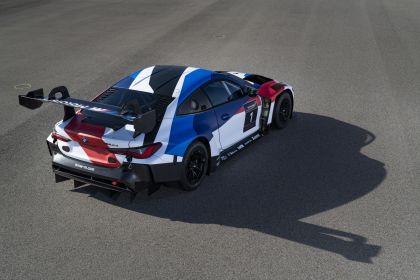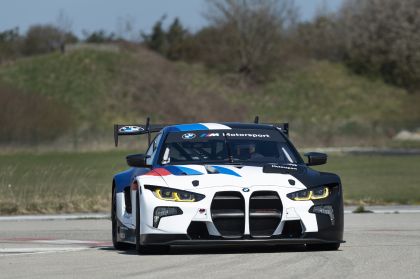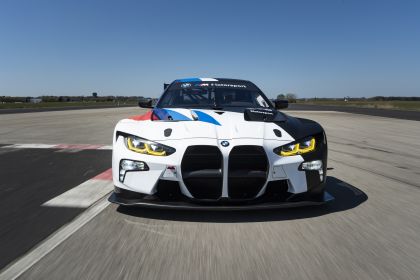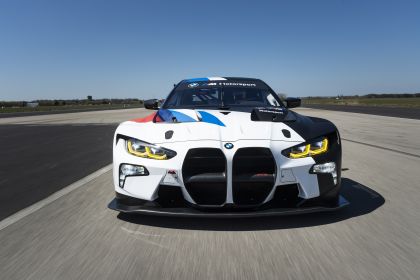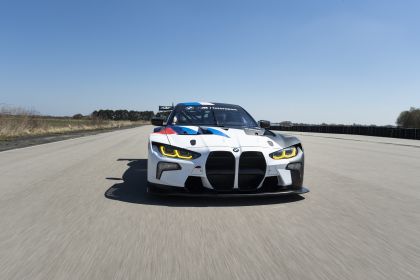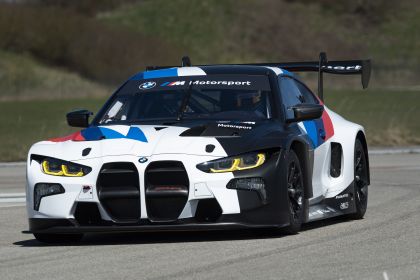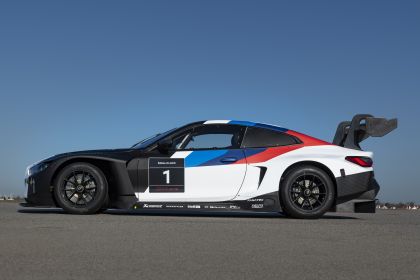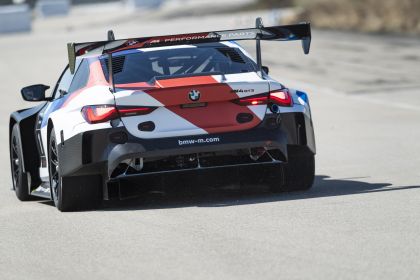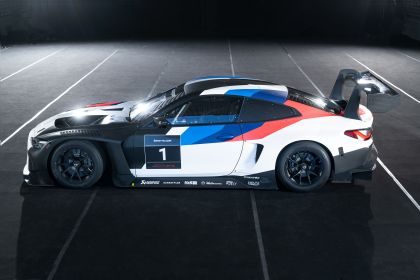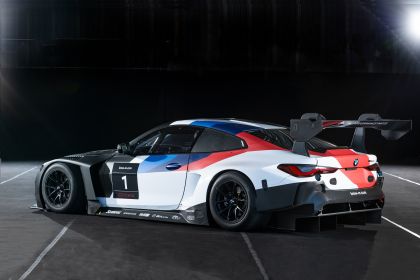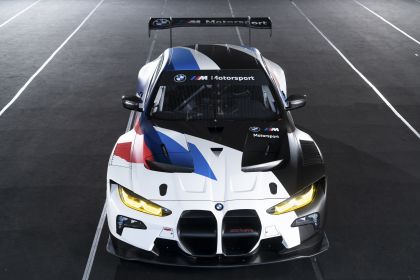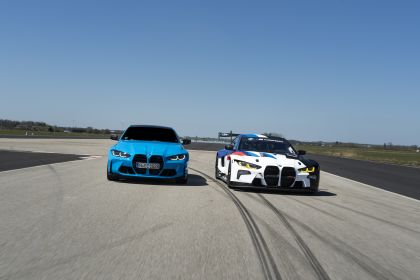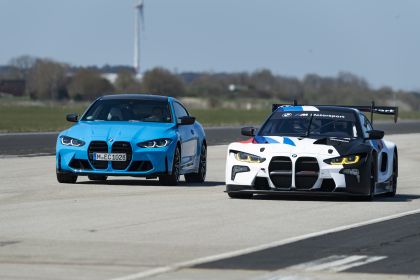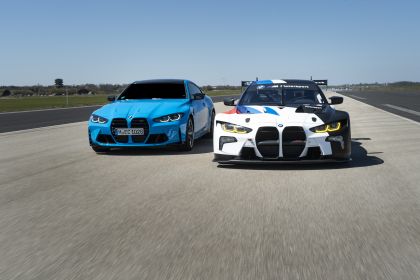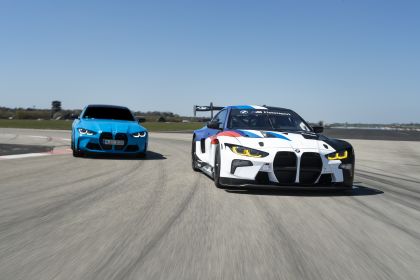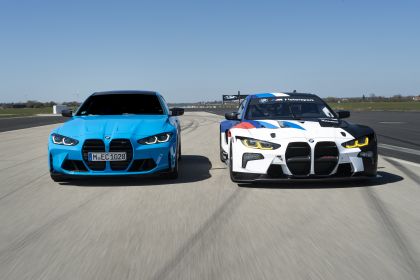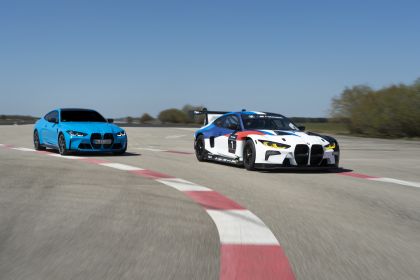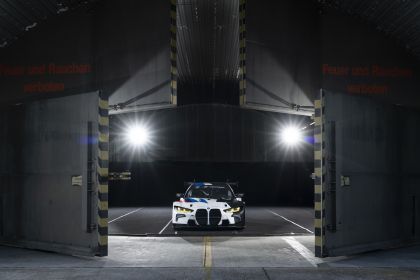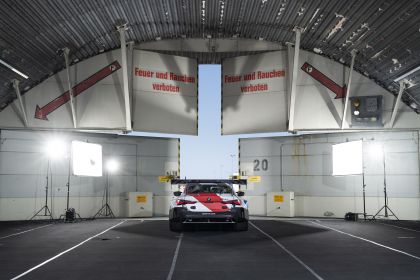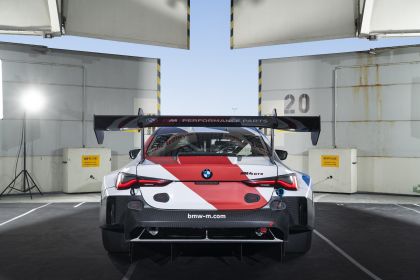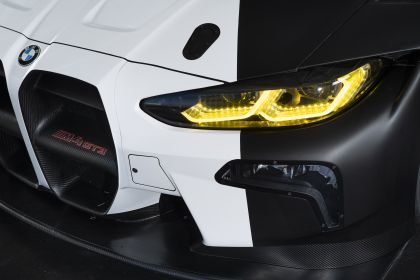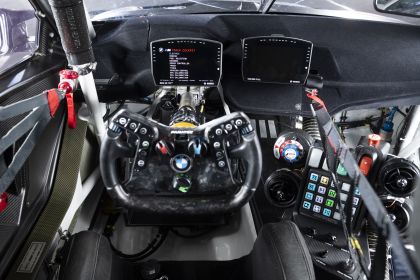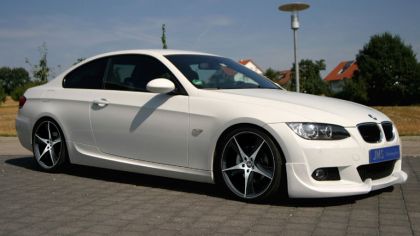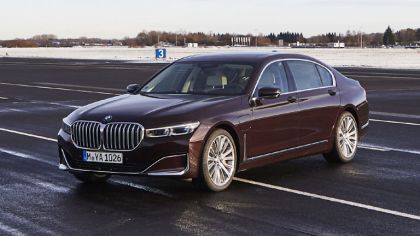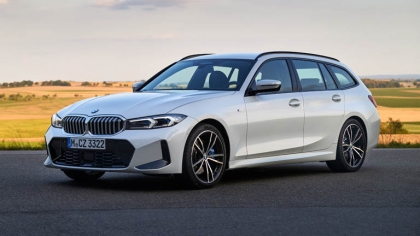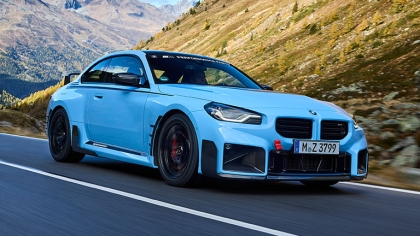BMW M4 GT3 completed its first kilometres at the roll-out at the BMW Group plant in Dingolfing. The moment when BMW works driver Augusto Farfus left the garage for the first time was a very emotional one for everyone involved at BMW M Motorsport. At the same time, it also represented a milestone and, at that time, highlight of a development process that began in early 2019 with CFD computer simulations.
In February 2021, the 590-hp P58 engine hit the test bench. From the middle of the year, the first tests were performed in the BMW Group wind tunnel, using a 60-percent scale model of the car. The first test chassis for the BMW M4 GT3 was produced at the start of 2020 at the BMW Group plant in Regensburg. After this, the test car, which was used for the roll-out, was assembled within about six weeks in the BMW Motorsport workshop. This was followed in 2020 and 2021 by many test sessions, during which the car was constantly optimised on its way to being race-ready. The new car already has over 14,000 test kilometres under its belt - meaning greater driveability and reliability. The goal: to significantly reduce lifecycle costs and maintenance expenditure compared to its predecessor. Together with BMW Team RMG, BMW M Motorsport will continue its intensive test work over the course of the year, adding initial test races to the programme. The BMW M4 GT3 will make its race debut on 26th June 2021 at round four of this season's Nürburgring Endurance Series (NLS). From 2022, the car will then be in action in the hands of BMW M Motorsport teams in top GT racing series and endurance races around the world.
The purchase price of the BMW M4 GT3 begins at € 415,000 net - that is € 4,000 less than the price of its predecessor, the BMW M6 GT3, and similar to that of its competition. The "Competition Package" is available as an option ex factory for an additional charge. This includes useful optional features, integrated and tested specifically for use in endurance races. For example, additional headlights, spring travel sensors, a rear radar/camera system and a system for measuring tyre pressure/temperature. As a special extra, the package includes an exclusive training day in an in-house BMW M4 GT3 simulator.
The close collaboration between BMW M Motorsport and the production developers at BMW M GmbH also plays an important role in the progress of the BMW M4 GT3: the cars are assembled directly at BMW M GmbH in Garching, near Munich. The use of the BMW Group's test facilities also has key advantages. For example, various whole-car and component test benches can be used to measure performance, vibrations, efficiency and roll resistance. The BMW M4 GT3 has undergone tests on the engine test bench and roller dynamometer. On top of this came intensive work in the wind and climate tunnel, as well as a test in the acoustic channel, in order to promote the noise measurement set-up and silencer development with noise emission for the BMW M4 GT3. But this state-of-the-art channel can do far more. In series production it is used, among other things, for sound development and to configure driving and interior noise.
When developing the BMW M4 GT3, BMW M Motorsport can count on the support of some proven and strong technology partners: Akrapovi, BMW M Performance Parts, Endless, FANATEC, H&R, KW Automotive, Schaeffler and Shell. One extraordinary project is the world's first steering wheel that can be used in both a real race car and a race simulator, which was developed together with FANATEC. It was demonstrated to the public at the end of 2020 at the BMW SIM Live Event in Munich.
DESIGN
From series production to the race track - and back: BMW M GmbH offers insights into the development of the new BMW M4 GT3 racing car and identifies some fascinating similarities between the new flagship model in the BMW M Motorsport line-up and the BMW M4 Competition production model.
In the BMW M Design Talk, Anne Forschner, Exterior Designer BMW M4 Competition, and Michael Scully, BMW Group Designworks Global Automotive Director, first talk about the most striking design feature of the two cars: the BMW kidney grille. "All BMW M cars have a polarising effect, which means they do not automatically appeal to everyone. Their impact on people is both physical and emotional," said Forschner. "The kidney grille retains the production car's perimeter geometry, while their interior surfaces have been opened-up and celebrate the care and feeding of the race engine's enhanced cooling requirements for the M4 GT3", explained Scully. At the front of the BMW M4 GT3, he points out more special details, with which his team was directly oriented towards the production model.
Viewed from the side, it is clear that the racing car implements the same constellation of design elements as the production car to define the bodyside. The roof, with its two longitudinal fins, and the heavily raked rear window are also identical in form on both the BMW M4 Competition and BMW M4 GT3. These elements enable an ideal flow of air to the racing car's rear wing.
The greatest differences between the two cars can perhaps be found at the rear. "The tail of the BMW M4 GT3 is familiar in some areas, but in others it looks very different," said Anne Forschner. "The racing car is 75 millimetres wider on each side, but we have carried over the rear lights from the production car and the rear contour of the boot lid is also the same," added Michael Scully.
Forschner points out how the many likenesses between the duo, which already give the standard model a very sporty appearance and provide an excellent basis for the race version, clearly reflect how the two cars were developed: "From the road to the race track and from the race track back to the road." Meanwhile, Scully is fulsome in his praise of his colleagues from series production. "The BMW M4 Competition production model represents a wonderful basis on which to make a racing car. It has iconic elements and geometry geared to delivering high performance and efficiency."
ENGINE
Marcus Engelke, Project Manager Drivetrain BMW M4, and Ulrich Schulz, Head of Drivetrain Design at BMW Motorsport, highlight fascinating details of the six-cylinder in-line engine with M TwinPower Turbo technology, which was conceived from the outset for both the BMW M4 Competition and the BMW M4 GT3.
"510 hp, 650 Newton metres (479 lb-ft) - this is the most powerful straight-six engine we've ever fitted in a production car," said Marcus Engelke. "590 hp, 700 Newton metres (516 lb-ft) - this is the most powerful straight-six engine BMW has installed in a racing car since the days of the BMW M1 Group 5," added Ulrich Schulz. The two engineers go on to describe how incredibly similar the engine in the BMW M4 Competition is to its counterpart at the core of the new flagship model in the BMW M Motorsport line-up.
With components of the power unit in the production M model - including the crankcase, cylinder head, crankshaft drive, crankshaft and connecting rod - also designed to deliver maximum performance on the track, the perfect groundwork for the race-spec unit is already in place. Engelke and Schulz explore in detail how the engine is positioned and installed in the different cars, and underline their points with easy-to-understand sketches on a flipchart. This paints a clear picture of where the specific demands on the production/racing car engine lie and how BMW M GmbH has risen to the task of meeting those challenges.
STEERING WHEEL
During the digital BMW SIM Live Event in December 2020, BMW SIM Racing presented a spectacular world first, which takes the transfer of technology between real and virtual motor racing to a totally new level: the steering wheel for the BMW M4 GT3, which was developed jointly by BMW M Motorsport and sim hardware producer FANATEC. What makes it so revolutionary? It is the first steering wheel of its kind that works in both a real car and a simulator. Made of carbon, it is a motorsport design with illuminated buttons and magnetic dual-action shift paddles, also made of carbon.
While the steering wheel is in use at all the tests with the real BMW M4 GT3 race car, and is permanently being optimised, it will go on sale to sim racers in the second quarter of 2021. Parallel to FANATEC commencing sales, a documentary film on the development of the hybrid steering wheel, which combines the worlds of real and digital motor racing, will be released on the Amazon Prime streaming platform.
"The first time I heard of the idea to design the BMW M4 GT3 steering wheel to be compatible with a simulator, I was flabbergasted - because I was thrilled by the concept from the word go," said BMW works driver Philipp Eng, who demonstrated the steering wheel at BMW SIM Live 2020 and plays a main role in the documentary. "You have to take your hat off to the pioneering role that BMW Motorsport and Fanatec have taken on here, and to the courage to implement a project of this kind. I know the people who were involved in the development at BMW Motorsport and at FANATEC, and never doubted that they would design a superb steering wheel. Compared to the steering wheel in the BMW M6 GT3, for example, the new wheel has extremely good ergonomics. It is very comfortable to hold. You can tell that real professionals have been at work in every area."
